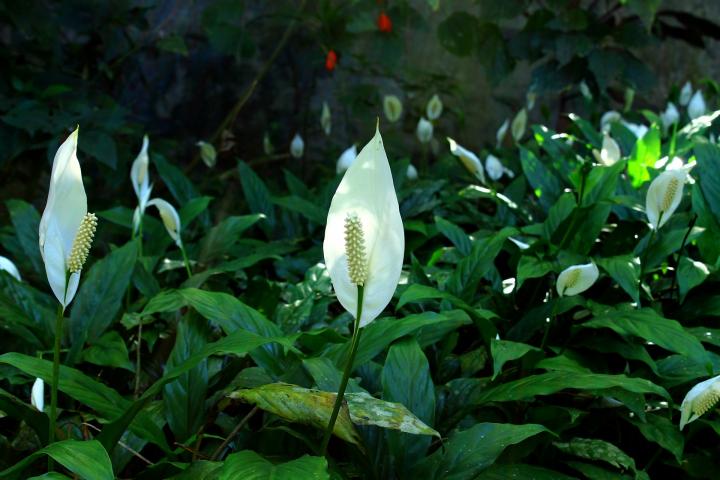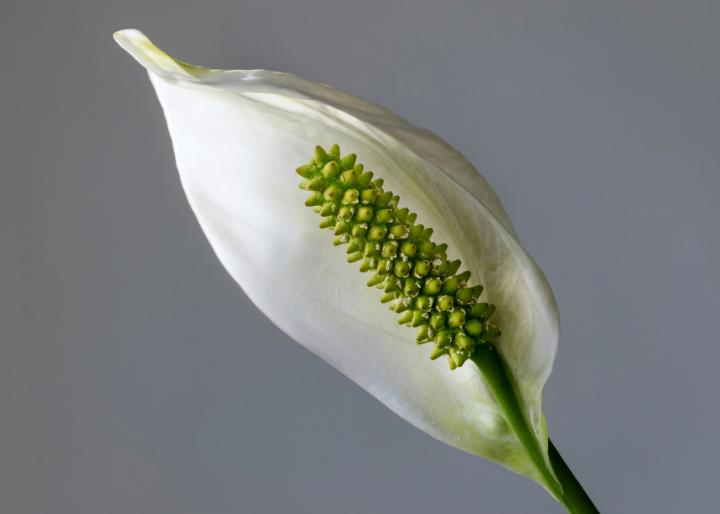
Growing Peace Lily Plants: Watering, Light, Repotting, and Pests
Types
Specialty varieties of peace lilies are not very easy to come by in most garden centers, though they have been growing in popularity. You may have more success ordering them from an online source.
- Spathiphyllum wallisii is a smaller peace lily, reaching only 12 inches tall.
- ‘Petite’ is smaller still, at approximately 8–10 inches.
- ‘Sensation’ is the largest variety available, capable of growing up to 4–6 feet in height and width.
- ‘Domino’, is a medium-size variety with attractively variegated leaves.
- ‘Mojo Lime’, which has lime-green foliage, is another medium-size peace lily.
ADVERTISEMENT
My 27-year-old peace lily Bob has not bloomed for 2 years. He is in the same window space and has the same watering schedule, but no blooms. I rotate him every couple of years. Any ideas?
Hi, Dave. It sounds like Bob might like to be re-potted and perhaps given a new location. While you do not want to put Bob in direct sunlight, peace lilies thrive when they receives lots of bright, indirect sunlight. Try moving him to a place that is bright and out of the shade, but won’t be in direct sun. Also, Sherri (comment directly below) has an interesting tip about using banana-infused water!
I've had my large peace lilies for going on 20 years. They weren't too find of flowering until I began watering them with banana infused water. I keep a one gallon jug full of banana peels under water in my laundry room. Every couple of weeks or so I dump it out and water the lilies. They flower and seem more happy now.
Thanks for sharing, Sherri! Great tip!
I bought a peace lily
In a round vase in water wit the gel
.. beautiful.. but all my flowers are green … in kitchen window low sunlight … why are my flowers green … please help
It is natural for the peace lily’s spathe—the leaf-like wrapping that surrounds the small flowers—to be green as it develops. In its normal cycle, the spathe starts and ends green, turning brilliant white mid-season. That is probably what you are seeing. But if you feel like it is more than just that, there are a few things you can do to bring out the brighter whites. The peace lily needs minimal fertilizer, so houseplant fertilizer should be used at half strength, only once or twice a year. The peace lily thrives in bright, but indirect, light and in moist but well-drained soil.
Why does the flower on peace lily turn brown
Am I supposed to cut the brown leaves off or just left them fall off?
The edges of the leaves can turn brown by overfertilization or by excessive drying. Use sharp scissors to cut away the dead, brown areas. Just be sure to follow the leaf’s natural shape.
This is an easy plant; you’ll do great!
This plant likes to be evenly moist but lets the top layer of soil dry out a bit between waterings. If it’s droopy, it means it’s pretty thirsty. If you go too long without watering it, you’ll see yellowing leaves that eventually die off. I have 2 of these; one is about 12 feet away from a south-facing window and gets indirect bright sunlight (it’s a big window). The other is in a darker west-facing window, but that room has grow lights. They are both thriving; just keep them away from the direct sun.
Learn More: https://www.bumbleplants.com/











